The MSI MPG A1000G PCIE5 PSU Review: Balance of Power
by E. Fylladitakis on February 2, 2023 1:00 PM EST- Posted in
- Cases/Cooling/PSUs
- PSUs
- MSI
- 80Plus Gold
- ATX v3.0
- 12VHPWR
Hot Test Results (~45°C Ambient)
The MSI MPG A1000G PCIE resists high ambient temperatures well enough for an 80Plus Gold certified unit, with an average efficiency degradation of 0.65% across the nominal load range. However, the degradation while the unit is very heavily loaded is high, at over 1.5%, suggesting very high thermal stress.
Due to the aggressive cooling profile, the internal temperatures of the MSI MPG A1000G PCIE are quite low for a unit with that kind of power output. The thermal losses of this PSU at maximum load are over 125 Watts, with the fan giving its all by the time the load is at 80% of the unit’s capacity, and even then the component temperatures are of the lowest we have seen in products of similar class and power output. The irregular observation here is that there is a sharp efficiency drop at maximum load while the PSU’s primary components are not too hot. We ruled out the common culprit which is undersized components, as the components used in the MPG A1000G are more than capable of delivering the required currents, as well as the possibility of a poorly attached part to its heatsink that would cause a massive hot spot. That implies that the MPG A1000G PCIE simply is based on a platform strongly optimized for low-end performance, or that the platform was not originally meant to be used for 1+ kW units.
As we mentioned above, the internal temperatures of the MSI MPG A1000G PCIE are quite low for a product of its class and power output. The culprit behind this is the aggressive cooling profile and the large Hong Hua 135 mm fan. With the PSU operating inside our hotbox, the unit is relatively quiet while the load is very low, with the fan’s speed increasing almost linearly alongside with the load if the latter is greater than 200 Watts. The controller had the fan running at maximum speed by the time the load was 800 Watts, making the MPG A1000G PCIE5 annoyingly loud. Typical PCs (at least not those available today) will not continuously draw that kind of power from the PSU but it can become a problem under certain usage scenarios.


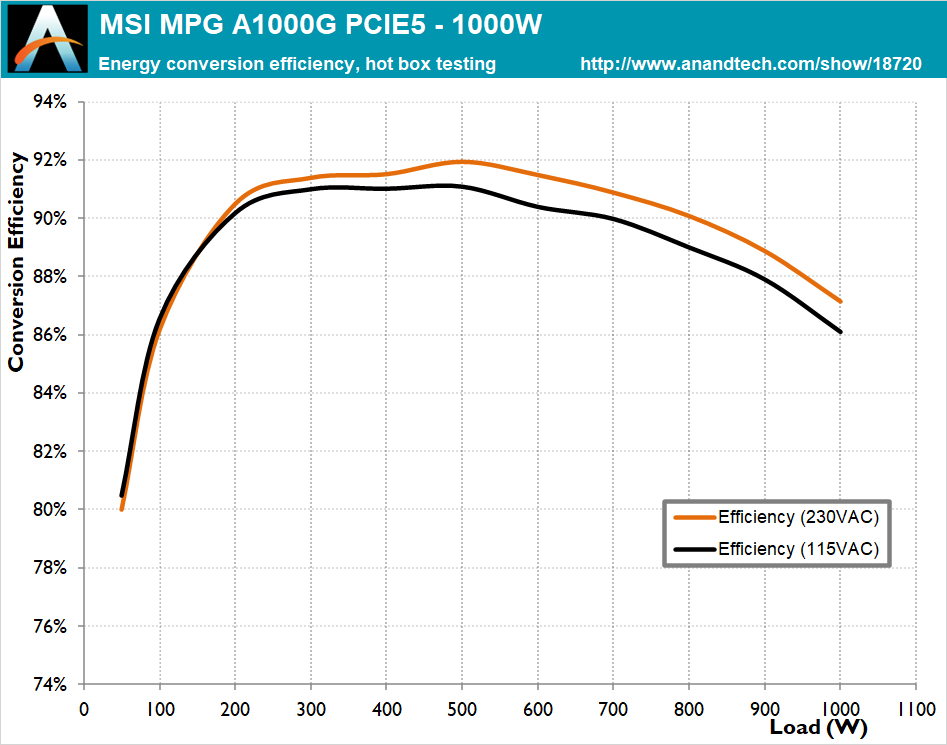
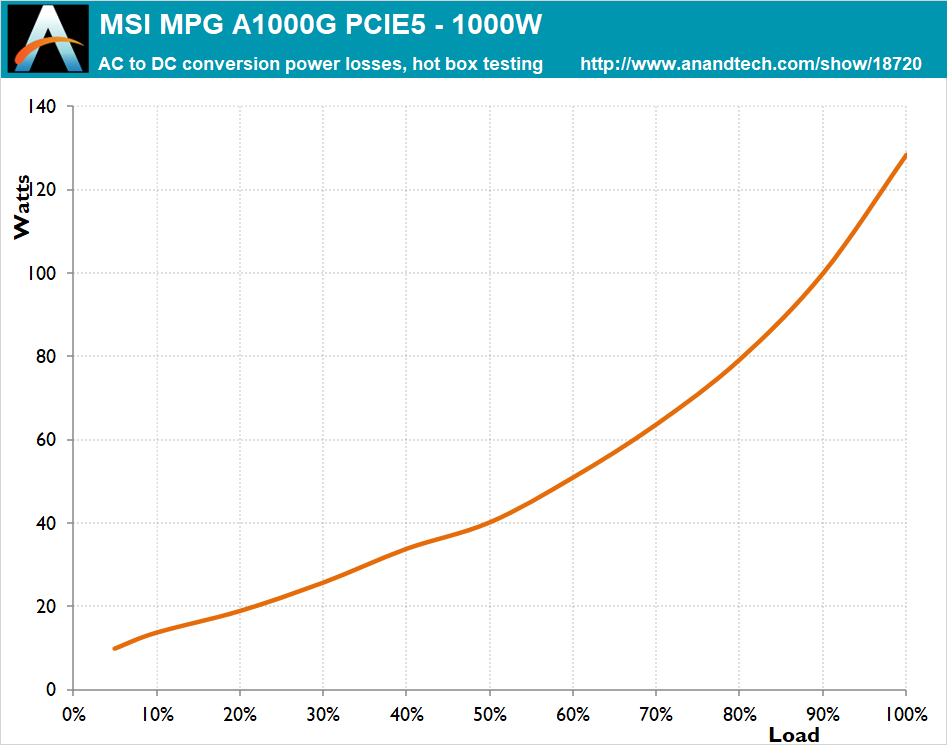
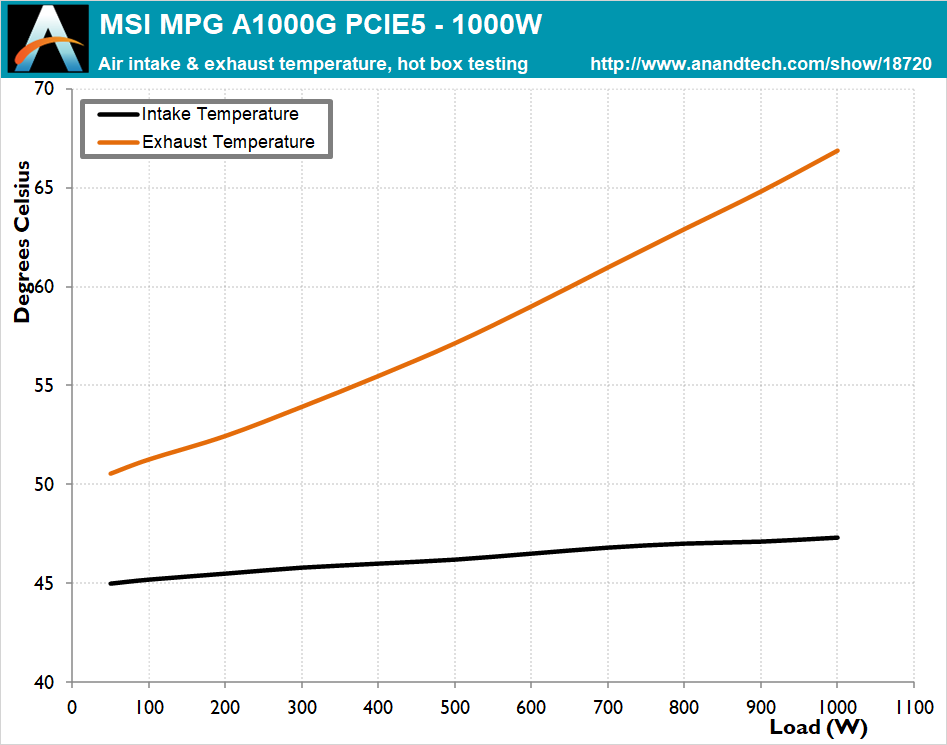
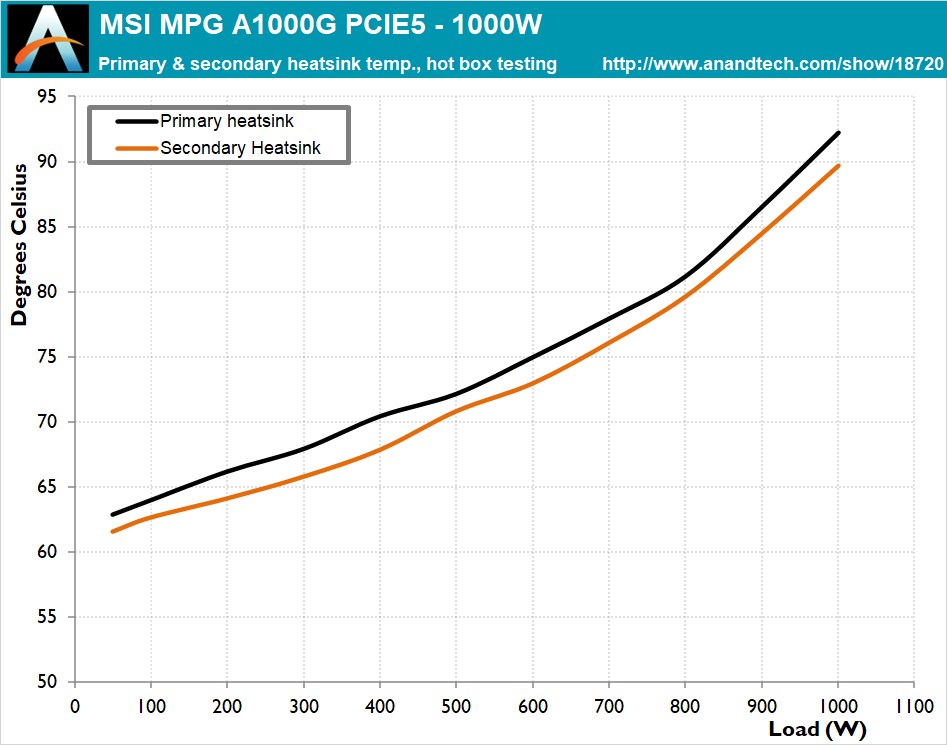
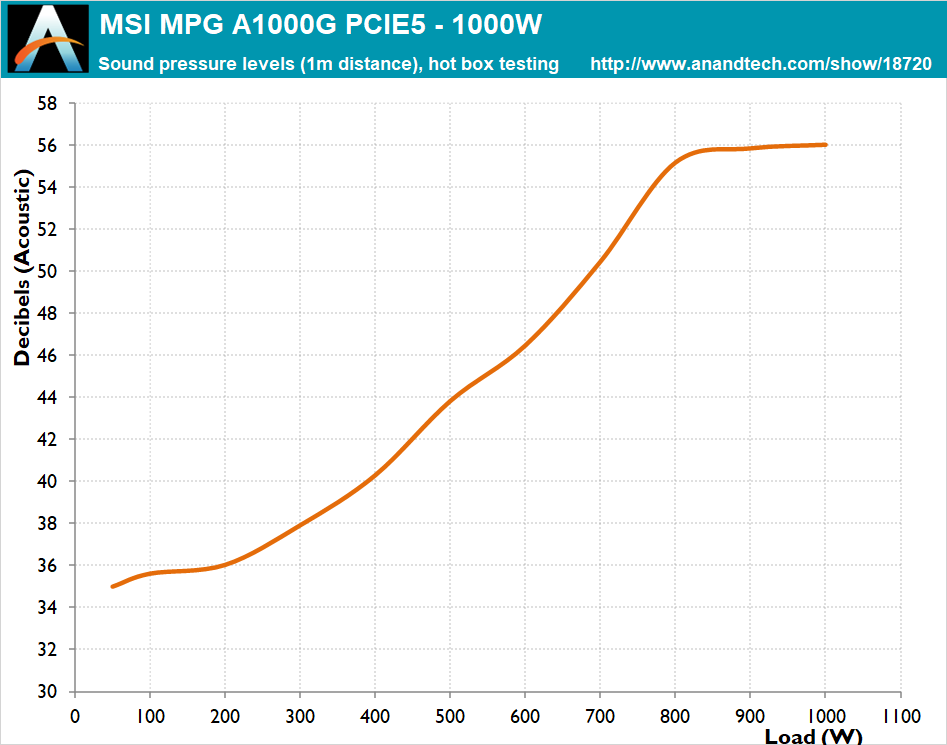








15 Comments
View All Comments
sparkuss - Thursday, February 2, 2023 - link
Picture is of a 220V spec cord. Is that the only cord it comes with or will US Market items have 110-120V cords?DanNeely - Thursday, February 2, 2023 - link
It's a europlug because E. Fylladitakis lives there. The whole reason behind detachable power cords is so that you can switch in the one appropriate for the market it's being sold in. Unless you're buying from a gray market importer it shouldn't be an issue. And unlike UPSes, where the difference in plug sizes can impact how many outlets are available it should work identically.Order from Amazon.de and get that plug, order from amazon.com and get a 5-15 plug.
PeachNCream - Sunday, February 5, 2023 - link
Its also very easy to source the correct wall outlet cable in the US. There are many millions of those lying about the States due to how many desktop PCs there once were and how few currently remain in daily use after the desktopoclypse when laptops took over as primary PCs more than a decade ago along with the fact that said cables are still in production. There's quite the oversupply presently.eriri-el - Tuesday, February 7, 2023 - link
You do know that those are standard called C13 on the cord side and C14 on the PSU side respectively. These are used in many many electrical appliances, for a very long time before computers became a household norm, not just computers. You should look at the behind of all of your appliances in your house more often. There is alot of them in the market because many people use them for many things, not just computers.atragorn - Friday, February 3, 2023 - link
Is it user selectable whether it is 240 or 120 or is it based on the market it is purchased in ?If I buy in the US can I change to 240 is what I want to know.
Also the efficiency will be lower with a single phase 120 line. Is it possible to test that unless it's a European only power supply?
It can be very different possibly.
meacupla - Friday, February 3, 2023 - link
The PSU has an auto-switch, and can handle 100VAC~240VAC 50Hz/60HzIf you buy in North America, to use 240VAC, you should first check if you have a spare 240VAC outlet to begin with, and then check which type it is. There are a few different NEMA
Then you can get a "NEMA (insert plug type) to IEC C13 Power Cable"
temps - Friday, February 3, 2023 - link
Bought one of these to power my rig before any reviews were out... it's nice to see it measures quite well and is actually very efficient in the range my computer spends 99% of its time in.Strange though, my PCIe 5.0 cable was round wound and not flat like this one was. It was the only round cable in the box.
jb14 - Friday, February 3, 2023 - link
I have one of these on order for a rig, to power a MSI 4090 and an i5 13600K + AIO cooler. I'm trying to keep the noise down but see here that at 800W+ (where I may reach gaming) it is annoyingly loud.Can anyone recommend another 1000W PSU which is similar in quality with 12VHPWR, but is quieter at higher wattage? Many thanks
dpenda - Saturday, February 4, 2023 - link
The Bequiet Darkpower 13 seems to fit your request. The Seasonic vertex also seems promising although no reviews out yet. You might also consider going to higher wattage - a less stressed power supply will keep Dan noise down.jb14 - Sunday, February 5, 2023 - link
Yes, I came across the be quiet 13 later and see it's just been released so missed it first time round. The reviews are good so have made the switch to it. Thanks